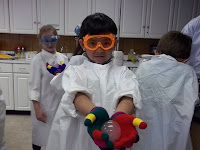
With a short study of Egypt, we are concentrating our next unit on "Lost Artifacts". There is a lot of talk in the last few years about artifacts from around the world which have been looted or lost through the spoils of war, or simply taken to another country for archeological study and then never returned. We became interested in some of the most famous of these artifacts and began our research! As we follow the history of the artifact, we will decide if the artifact should belong to the original country of origin or stay in its present home. The fourth grade scientists chose their lost artifact and will begin researching using a Webquest creator, Zunal.
Here are the WebQuests and a little bit about each artifact.
The Koh-i-Noor Diamond
How could a diamond, 136 carats, with such rich India and Persian history end up in the British Royal Crown Jewels? The curse of the Koh-i-Noor may explain part of that answer. The curse"states that "whoever owns the diamond, owns the world, but will also own all its misfortunes. Only a woman can own the diamond and be free from the curse."
The Bust of Nefertiti
Nefertiti was the beloved Queen of ancient Egypt. A bust of her liking was sculpted by the famous Egyptian artist: Thutmose. A German archeologist, studying Egypt, smuggled the original bust out of the country. It remains now in the Berlin's Neues Museum, Germany.
T
he Artifacts of Machu Picchu
Machu Picchu is known as the Lost City of the Inca. As the Spaniards invaded Mexico and Central America in the 1500's, they burned and destroyed much of the rich history of the Inca. This city of Machu Picchu lies atop an 8,000 foot mountain and many of its remains went untouched by the Spanish Conquest. A Yale University professor "discovered" the remains and removed several artifacts to be placed in the Yale University Museum. With much controversy, the remains are being returned to Machu Picchu, a few at a time, through 2012.
Zodiac Ceiling
This amazing sculpture was at the root of one of the first controversies concerning the age of the world. It was believed created in 50 BC by the ancient Egyptians, and placed in the Temple of Hathor.
It was stripped from the Temple, during the Napoleon's campaign in Egypt (using dynamite), and shipped to Paris, France where it remains to this day.
Priam's Treasure
This collection of jewels, gold and silver pots, pans, earrings and necklaces was discovered by German archeologist, Heinrich Schliemann. Schliemann was obsessed with finding the ancient lost city of Troy. Priam was the ruler of Troy during the Trojan War, so when the treasure was discovered, it was assumed to be part of Priam's buried wealth and thus Schliemann claimed to have discovered the remains of the city of Troy. The treasure exchanged owners after World War 2 as Russia took the treasure and kept it secret. They refuse to return it to Germany and say it is "payment" for the costs bestowed upon Russia by Hitler's invasion.
We hoped to use Dipity (a time line creator) as a product to display our research. It seemed to operate too slow. We used Google Docs instead and the scientist loved how easy it was to create and share.
This unit leads nicely into our visit to the Houston Museum of Natural Science where we will see an actual mummy as well as other artifacts from Egypt and the world.
In the lab we explored "Pharoah's Chambers" and built a model of a pyramid. We experimented to find out how the ancient Egyptians allowed light to shine in the pyramids so that they could properly decorate and honor their dead within the tomb.
When the actual building of the chambers is complete, the scientist try to reflect the light from the flashlight, directly into the tomb using the pathway from the outside.
It was amazing to see the mathematical / geometric relationship between the placement of the mirrors.
We had a great opportunity to discuss parallel and perpendicular as well as the angles created by these lines.
Nice work!
























































